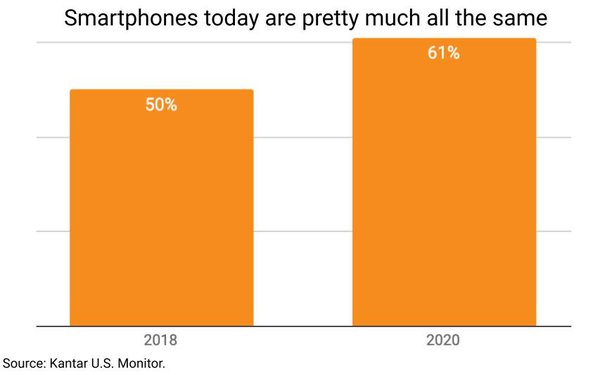
The paradox of quality is that the better our
products get, the more they are alike.
Quality is contagious. It multiplies itself. Quality follows quality, which is why quality also converges.
Take cars, for example. One
of the key things people want from gasoline-powered cars is good gas mileage. Maximizing fuel efficiency involves many things, such as tire resistance, lubrication, weight and engine design.
But the most important thing is the aerodynamic design of the car’s body. The shape of a car must minimize drag and instability. The laws of physics that come into play apply to every car, so
every car designed to maximize fuel efficiency will end up in the same place.
That is because one shape works best. This is why the silhouettes of most cars these days — mass
market and luxury — are pretty much identical.
advertisement
advertisement
This phenomenon was called out last year by Epoch strategy director Alex Murrell in a thought-provoking blog post entitled “The Age of Average.”
He showed an image of the side profile of 25 cars. We would be
hard-pressed to pick out one from another. All cars have greatly improved on gas mileage, and in doing so look more and more alike.
And it's not just car
silhouettes — it’s brand logos too.
Web developer Radek Sienkiewicz pointed out in a 2020 blog post that brand logos now look more alike. The reason is the handheld mobile
devices people use to shop and browse these days.
Branding must look good on smart phones and tablets. Certain fonts and colors are more readable on mobile devices, so brands are converging on
those.
Logos are better, but only by looking more and more alike.
You see this in everything. You name it, and Murrell does. Coffee shops. Models. Movie posters. Book covers.
Toothbrushes. Retail shelves. Skylines. Websites. Instagram photos. And more.
In every case, it is quality following quality. Something works best, so everybody does that.
Think of your own experience. When a competitor comes out with a better feature, you don’t just fold up and quit. You do it, too.
If it’s the best thing, everybody
will do it. For the very reason that it’s the best thing. But in doing so, everybody ends up in the same place. It's higher quality all around, but with less differentiation. It is a commodity
marketplace at a high level of quality, not a low level.
Quality used to cost more to produce and deliver, which put high quality out of reach for many brands and most consumers. But
this has changed.
Increasingly, quality is affordable. In years past, commoditization meant lower quality — everything headed to the lowest common denominator.
These
days, it means higher quality — everything headed to the highest common denominator.
For example, grocery, convenience and drug retailers have made significant investments in the quality
of store brands, thus making trading-down less if any of a trade-off in quality.
AI is sure to worsen the paradox of quality. The genius of AI — especially generative AI
— is that it can quickly survey what’s known about something and distill current learning about what’s best.
In other words, AI takes the guesswork out of great by pointing
directly to consensus knowledge about the best and highest-quality thing to do.
As brands and businesses use AI to synthesize large datasets, quality will cease to be exceptional.
Quality will become normative. Everything will be much better, but also much the same.
It's not quality that builds brands, however. It’s difference, and difference that is
motivating or specifically relevant to consumer needs and wants.
Absent difference, any brand is as good as any other. In such an instance, every brand is great — just the
same.
The challenge for brands is difference. It’s the same challenge as always except that quality is no longer a reliable or sustainable way in which to create and deliver
difference. For many categories, quality has become table stakes.
This has had the effect of making advertising less about the brand and more about the spectacle of the ad
itself.
Natasha Degen, who teaches at the Fashion Institute of Technology, wrote about this in a New York Times op-ed earlier this year. The “hype machine” now “precedes and overwhelms the product,”
she observed. What people seek is the experience of the marketing — the buzz, the craze, the movement, the crowd, the conversation, the promotion.
Product quality is expected.
So it’s more about the rush of getting there than what you get once you get there.
It’s marketing as the difference that delivers — a quality of spectacle that,
paradoxically, presumes a quality product.